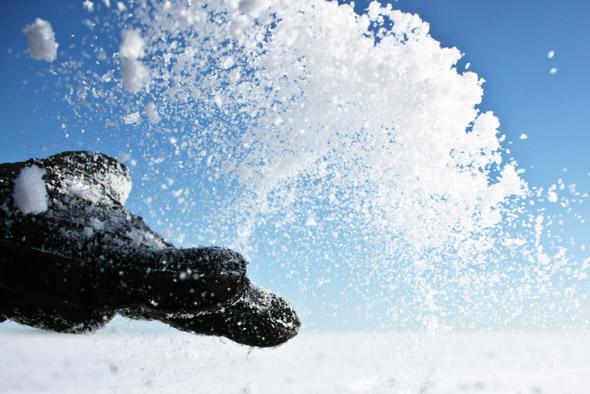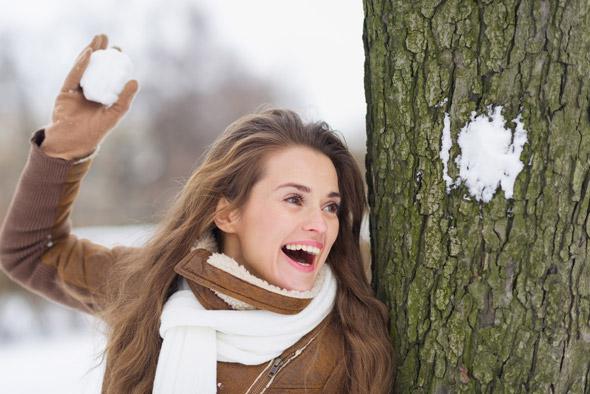Here at BA Central I see a lot of truly ridiculous conspiracy theories. Over the years there’s been the Moon Hoax, various asteroids NASA was covering up that would hit the Earth (or wipe us out somehow via electricity), and of course the end of the Earth over and over and over again.
Yet happily, we’re still here. Yet sadly, so are these silly theories.
A new one is making the rounds, and it’s so forehead-slappingly silly that at first I ignored it. Sometimes these things die on their own, and I need not waste precious brain cells debunking them. But this one, unfortunately, is making the rounds on YouTube and Facebook, so it’s time to melt it away.
Literally. The claim is that the snow that fell on Atlanta last week wasn’t actually snow. It’s unclear what these folks think the powdery white stuff was, but some of the claims involve chemtrails (of course!), mind-altering chemicals, and nanobots.
I made a video debunking all this, but first let me give you a brief synopsis. In late January 2014 a snowstorm hit Atlanta, paralyzing the city. The depth of the fall was only 2 inches, but for various reasons this caused massive trouble across the city, stranding people and leading to general chaos.
Here is where it gets weird. Some people went outside and made snowballs. Then—and I have no clue who would think to do this in the first place, but there you go—they held a lighter to the snowball. What they claimed then is that the snow didn’t melt and drip away as you’d expect. That’s odd enough, but then they saw scorch marks on the snowball! Ice can’t burn, so why were there black streaks on the snowballs?
Can you guess what’s going on here? I had my suspicions, so I decided to test this myself; over the weekend we had a lovely snowfall in Boulder, Colo., so what nature provided I utilized. Here’s the video:
To summarize, two things happen: One is that as the snow melts, the remaining snow absorbs the water. That’s why it doesn’t appear to drip; the snowball becomes a slushball.
Lots of people made videos showing the snowball not dripping so it looks like it’s not actually melting, but this is a classic case of confirmation bias. They only tested this part way; they didn’t finish the test by letting the snowball actually melt! I do that in my video, and you can even see the water getting absorbed into the snowballs I made.
I’ll note another video has a guy testing ice from his freezer to show that it does melt when hit by a flame, and the water drips away. But that still makes sense given what I showed; ice isn’t porous like snow and can’t absorb the melting water. It’s good he took the next step in the experiment, but the problem is he didn’t think it through all the way, and consider how an actual lump of ice differs from regular old snow.*
But what about the scorching? Water can’t burn!

Photo by Shutterstock/FotoYakov
Which is true, and it didn’t. The black scorch marks are actually from the lighters themselves. Butane is a hydrocarbon, a molecule made up of carbon and hydrogen. When you burn it, the molecule reacts with oxygen in the air, breaking the bonds between atoms, and reforming new molecules. If the burning were perfect, all you’d have left is carbon dioxide (CO2) and water (H20).
But the burning is never completely perfect, and you get other stuff too. One thing that happens is that some of the carbon molecules reform into long chains, creating what we call soot. It’s that stuff that’s collecting on the snowball, not material from the snow itself!
So there you have it. What fell on Atlanta is white, powdery, and behaves just like real snow when hit by a flame. So I’m guessing the snow is actually, y’know, snow.
Like most ridiculous conspiracy theories, this one will die off, but another will soon take its place. What really bugs me about them is that they add to the credulousness of people; they short-circuit the ability to be skeptical. While claiming snow is some government-engineered technology hellbent on nefariousness is easy to dismiss, the damage done to the critical thinking skills of the public at large is real.
Unless folks can learn from their mistaken ideas, this kind of thinking is dangerous. We know that political parties and ideologically based “think tanks” will spread disinformation that gets absorbed by the public through various media. That’s no tinfoil-hat theory, that’s fact—you only need to read about the history of the tobacco industry (and now the fossil fuel industry) to see this.
We need to teach people how to think (and not just what to think), or else we won’t be able to separate the factual conspiracies from the fantasy ones. That’s why I take the time to debunk the silly ones. Because not all of them are so silly.
*Another site tried to explain this away by saying the ice was sublimating, turning from a solid directly into a gas. This happens with dry ice, frozen carbon dioxide, but it seems clear to me that’s not what’s going on here, especially since you can actually see the snow soaking up the water.
